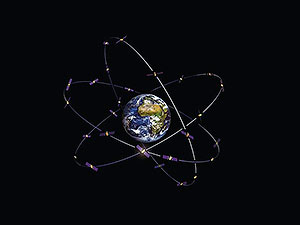Ru
|
Eng
Six satellites in Belarusian-Russian orbital group by 2018
08.04.2015

Plans have been made to increase the number of satellites in the Belarusian-Russian orbital group up to six by 2018, BelTA learned from Sergei Zolotoi, Director of the enterprise Geoinformation Systems of the National Academy of Sciences of Belarus, chief designer of the Belarusian space system for the remote sensing of the Earth, during the press conference held in Minsk on 8 April in anticipation of the International Day of Human Space Flight.
Sergei Zolotoi said: “The system was commissioned in late 2013. So far virtually within one year we have assembled quite a good information archive. Mapmakers need the data fed by our satellite most. If some territories have to be monitored, we need a group [of satellites]. The Belarusian-Russian group comprises two satellites for now. The Russian side intends to add four satellites of the same class to the group. Russia intends to insert them into orbit some time by 2018. In other words, the Belarusian-Russian group will boast six satellites with the resolution of two meters. The group will be able to carry out operational monitoring missions.”
In turn, Chief of Staff of the National Academy of Sciences of Belarus Piotr Vityaz did not rule out the possibility of Kazakhstan playing its part in the plans. Belarus has prepared an intergovernmental agreement on cooperation with Kazakhstan in researching and using the outer space for peaceful purposes. “We have created a group [of satellites]. It is necessary to expand it. We are now in negotiations with Kazakhstan. They have launched two satellites together with France. One boasts one-meter resolution while the other one boasts six-meter resolution. We would like them to cooperate with us. Because customers prefer those who deliver the full package of information,” he noted.
The Belarusian satellite BKA was put into orbit together with the Russian satellite Canopus-B at an altitude of about 500-520km using the carrier rocket Soyuz and the booster module Fregat on 22 July 2012. The shots taken by the Belarusian satellite boast high spatial resolution and provide panchromatic views (one channel) of the Earth's surface with the resolution of 2.1m and multiple-channel views (4 channels) with the resolution of 10.5m. The optoelectronic equipment weighs a total of 150-200kg. It was made by the Belarusian company Peleng and the Cybernetics Institute. The rest of the equipment was made in Russia and the UK.
Sergei Zolotoi said: “The system was commissioned in late 2013. So far virtually within one year we have assembled quite a good information archive. Mapmakers need the data fed by our satellite most. If some territories have to be monitored, we need a group [of satellites]. The Belarusian-Russian group comprises two satellites for now. The Russian side intends to add four satellites of the same class to the group. Russia intends to insert them into orbit some time by 2018. In other words, the Belarusian-Russian group will boast six satellites with the resolution of two meters. The group will be able to carry out operational monitoring missions.”
In turn, Chief of Staff of the National Academy of Sciences of Belarus Piotr Vityaz did not rule out the possibility of Kazakhstan playing its part in the plans. Belarus has prepared an intergovernmental agreement on cooperation with Kazakhstan in researching and using the outer space for peaceful purposes. “We have created a group [of satellites]. It is necessary to expand it. We are now in negotiations with Kazakhstan. They have launched two satellites together with France. One boasts one-meter resolution while the other one boasts six-meter resolution. We would like them to cooperate with us. Because customers prefer those who deliver the full package of information,” he noted.
The Belarusian satellite BKA was put into orbit together with the Russian satellite Canopus-B at an altitude of about 500-520km using the carrier rocket Soyuz and the booster module Fregat on 22 July 2012. The shots taken by the Belarusian satellite boast high spatial resolution and provide panchromatic views (one channel) of the Earth's surface with the resolution of 2.1m and multiple-channel views (4 channels) with the resolution of 10.5m. The optoelectronic equipment weighs a total of 150-200kg. It was made by the Belarusian company Peleng and the Cybernetics Institute. The rest of the equipment was made in Russia and the UK.
SCIENCE. TECHNOLOGY. INNOVATIONS
13.08.2024
28.06.2024
28.06.2024
25.06.2024
05.06.2024
15.05.2024
15.05.2024
26.04.2024
26.04.2024
26.04.2024













